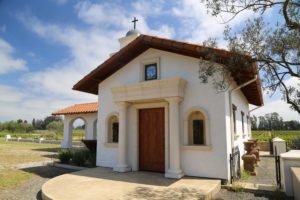
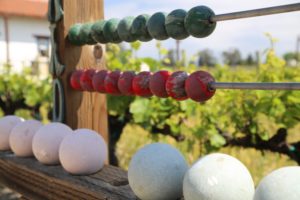
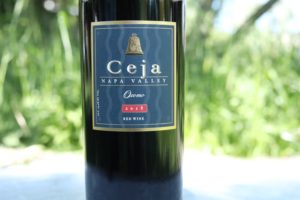 Ceja Vineyards is one of a number of Latino family-owned wineries in the Napa Valley. Ceja Vineyards was founded by 1st generation Mexican American immigrants Pedro and Amelia Ceja and Pedro’s brother Armando and his wife Martha. Armando is their primary winemaker. Ceja in Spanish means eyebrow. The Ceja’s originally lived in small villages in the state of Jalisco, Mexico. Amelia was born in Las Flores and lived on a farm. She came to the USA when she was 12 with her family to California where they worked in the southern part of the state picking primarily lettuce and melons. And worked their way north through the central valley picking stone fruit into summer, eventually reaching the northern part of the state to work vineyards in Napa and Sonoma counties and settling in Napa Valley. Amelia met her future husband Pedro in 1967 when both children were age 12 – helping their family harvest grapes in what is now arguably Napa Valley’s most famous vineyard, To Kalon, the majority of which is owned by Robert Mondavi Winery/Constellation. This was only the 4th day that Amelia had been in Napa Valley. And Robert Mondavi Winery had only been open one year. At the time neither Amelia or Pedro spoke English; in the 1960s in Napa Valley there was a low percentage of bilingual students so they were first placed in special education classes.
Ceja Vineyards is one of a number of Latino family-owned wineries in the Napa Valley. Ceja Vineyards was founded by 1st generation Mexican American immigrants Pedro and Amelia Ceja and Pedro’s brother Armando and his wife Martha. Armando is their primary winemaker. Ceja in Spanish means eyebrow. The Ceja’s originally lived in small villages in the state of Jalisco, Mexico. Amelia was born in Las Flores and lived on a farm. She came to the USA when she was 12 with her family to California where they worked in the southern part of the state picking primarily lettuce and melons. And worked their way north through the central valley picking stone fruit into summer, eventually reaching the northern part of the state to work vineyards in Napa and Sonoma counties and settling in Napa Valley. Amelia met her future husband Pedro in 1967 when both children were age 12 – helping their family harvest grapes in what is now arguably Napa Valley’s most famous vineyard, To Kalon, the majority of which is owned by Robert Mondavi Winery/Constellation. This was only the 4th day that Amelia had been in Napa Valley. And Robert Mondavi Winery had only been open one year. At the time neither Amelia or Pedro spoke English; in the 1960s in Napa Valley there was a low percentage of bilingual students so they were first placed in special education classes.
The family pooled resources in the early 1980s to initially buy 15 acres of land in the Carneros region; at the time of their purchase, Carneros was planted to far fewer vineyards than today. Their property used to grow plums and pears and later was used for pastureland for cows. In 1985 struggling to make payments based on extremely high interest rates, they were forced to try and sell the property. Ultimately, they were not able to find a buyer.
Their first vines were planted in 1986 with the intent to sell fruit to Domain Chandon for their sparkling wine. Their first harvest was in 1988. Today the Cejas own over 110 acres of vineyards focusing their efforts on vineyards located both on the Napa and Sonoma sides of Carneros. Over the subsequent years, the family continued to sell grapes to other wineries, however this changed in 2001 when they produced their first commercial vintage bottled under Ceja Vineyards. Today they still sell the majority of their grapes to other wineries and hold the remainder back to make their own wines.
This winery is truly a family affair as they all work in some aspect in the winery with the 3rd generation involved. Currently, they make approximately 7,000 cases of wine which they custom crush at another winery. Their focus is on premium Carneros based wines specifically Chardonnay and Pinot Noir however they produce a number of other wines, primarily 100% varietal.
Amelia Ceja is the ‘face’ of the winery – diminutive in stature, her accomplishments are anything but small. She was recognized by the California legislature as “Woman of the Year” in 2005 and was the first Mexican American woman to be president of a winery. She also loves the culinary world and has contributed numerous online culinary related videos through the Ceja Vineyards Youtube channel. And in 2019 she and other members of the Ceja family were featured in a full-length documentary telling the story of immigrants from Mexico who came to Napa Valley as laborers and are now winemakers or winery owners. It follows their stories, their hard work, their pursuit of the American dream and their eventual success.
Plans have been in the works for many years to build and open their own winery. As of 2022 the winery is already designed, and plans are underway to build a small winery and tasting room on their existing Napa Valley Carneros estate. Once the winery is completed, visits will be exclusively by appointment.
The Napa Carneros estate is surrounded by vineyards; a number of Chardonnay vines were removed to install bocce ball courts (two of them). The best way to play bocce at Ceja is with a glass of wine in one hand and a bocce ball in the other. A bronze bell on site was going to be installed in Mission San Luis Obispo but ended up being given to Ceja. They installed this bell on a small Spanish style ‘chapel’ on site (complete with its own pet cemetery).
Visitors to their Carneros estate often smell the inviting aromas of various culinary creations wafting through Casa Ceja as the family certainly loves to cook. Speaking of food, their wine pairs well with a variety of dishes, especially spicy cuisine such as Mexican and Thai.
Words you may see on Ceja’s informational literature are “Vinum, cantus, amor – translation, Wine, Song and Love! One may also see their other motto, “Wine+Food+Family+Friends =Fiesta”! The Ceja’s will tell you that, “wine is in our veins, not blood”! And they will also tell you that if, “we aren’t hugging by the end of the tastings, we have not done our job in terms of hospitality!”
One can’t help but be caught up in the enthusiasm and passion that the Ceja family has for wine, vineyards, cooking, dancing, community involvement and an all-around contagious zest for life.
Select Wines
Ceja keeps their wines lower in alcohol than many wineries; typically, under 14% with many in the 13 percent range. Also noteworthy, the current releases of their red wines tend to be 2 to 3 years behind the current releases of most area wineries spending additional time in bottle before being released. They make a wide variety of wines; unless otherwise noted, their wines are 100% varietal. And Ceja no longer uses capsules on their wines.
The Ceja wines always have the acid and freshness to complement a wide variety of cuisine including spicy foods such as Mexican and Asian dishes. They do not produce over ripe and opulent wines nor are they interested in making wines for the critics. What Amelia describes as the ‘democratization’ of wines has been their focus since their inaugural vintage – crafting wines that are accessible to a wide range of budgets. And her best advice is, “either your like the wines or your don’t”. Your taste is all that matters.
Whites/Rosé
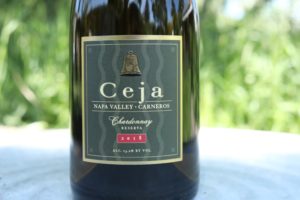
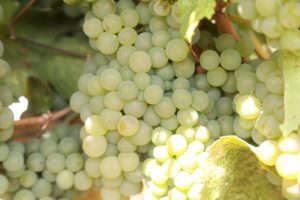 The 2022 Ceja Vineyards Chardonnay Napa Valley was barrel fermented and aged sur lie for 12 months; it did not go through malolactic fermentation. This wine is deep gold in color; the ripe and sweetly fruited bouquet offers aromas of honeysuckle, apricot, pineapple, mango, yellow nectarines with a light touch of vanilla and also a nutty character deeper in the aromas. The fleshy texture sports a rounded feel, complemented nicely by its bright acidity. There is a noticeable richness of both flavor, texture and acidity on the palate. It reveals flavors of pineapple, baked apple, Golden Delicious apple, peach and ripe pear. Lingers with a mouth watering vivaciousness.
The 2022 Ceja Vineyards Chardonnay Napa Valley was barrel fermented and aged sur lie for 12 months; it did not go through malolactic fermentation. This wine is deep gold in color; the ripe and sweetly fruited bouquet offers aromas of honeysuckle, apricot, pineapple, mango, yellow nectarines with a light touch of vanilla and also a nutty character deeper in the aromas. The fleshy texture sports a rounded feel, complemented nicely by its bright acidity. There is a noticeable richness of both flavor, texture and acidity on the palate. It reveals flavors of pineapple, baked apple, Golden Delicious apple, peach and ripe pear. Lingers with a mouth watering vivaciousness.
The 2018 Ceja Vineyards Napa Valley Carneros Chardonnay Reserva is deep golden color in the glass; offers a diversity of ripe fruit driven aromatics including of pineapple, cantaloupe, apricot, honeysuckle, orange marmalade, and a variety of dessert notes including vanilla, hints of caramel and hazelnut. A noticeable intensity of flavor runs the entire breadth of the palate and persists for some time on the rich and satisfying finish. Shows flavors of tangerine, mango, crème brûlée and ripe yellow peaches. The texture is creamy and supple, certainly a result from weekly lees stirring during its aging in barrel. An uplifting brightness of acidity counterbalances the texture, especially on the finish. This is a complex and layered Chardonnay well worth seeking out.
The 2023 Ceja Vineyards Bella Flor Rosé of Sryah (Petaluma Gap AVA) is medium copper in color; the minerally bouquet needs significant time to open. As it evolves it offers aromas of an orange peel zest, raspberry, rose petals and wild strawberry. This is is not a weak or wimpy rose; its mouth feel is one of this wine’s hallmark attributes. Creamy with an almost saline texture. On the palate there are flavors of mandarin, raspberry and strawberry and ruby grapefruit. Lingers fresh, bright and lively. This bottling would be great complement to a variety of shellfish, perhaps scallops or raw oysters. This wine was whole cluster pressed and then barrel fermented; it was then aged sur lie for 8 months in 2nd fill French oak barrels. 12.9% alcohol.
Reds
The 2022 Ceja Vineyards Pinot Noir, Carneros Napa Valley is pale to medium ruby in color. The bouquet sports aromas of cherry cola, dried cherries and cranberries, lavender, white pepper and clove. Its aromatics are more focused on its fruit characteristics rather than sometimes the more savory notes this variety expresses. Balanced in its youth, like the Ceja wines are crafted to be, on the palate there are flavors of raspberry, a hint of root beer, clove and a nuance of cardamom. The red fruited finish is lively, fresh and sports a light herbal component. The texture features a creamy feel with rounded and well-integrated tannins. This wine is a blend of Dijon and Pommard clones, fermented in 5-ton open top fermenters.
The Vino de Casa is a real nice find. It is a an extremely unusual blend, dominated by Pinot Noir and Syrah with sometimes an addition of Merlot. When winemaker Armando Ceja was in college one of his professors told him that it was impossible to blend these two varietals. Never say impossible. This wine is a testament that these two varietals can complement each other quite well. The softness of the Pinot Noir is felt on the front of the palate and the Syrah brings a slight pepper flavor to the mid palate and certainly rounds out a long finish. Out of 1,200+ Napa Valley based wineries and producers visited with to date, this is the only winery we know of blending these two varieties together. And it has become their most produced wine.
The 2018 Ceja Vineyards Vino de Casa Red Blend, Petaluma Gap is a blend of 70% Pinot Noir, 20% Syrah & 10% Merlot. The bouquet offers aromas of red licorice and some floral notes. Two words describe this wine on the palate: supple and balanced. It offers flavors of cherry and some light savory notes on the finish including hints of white pepper. This is an easy drinking pleasurable wine ideal for pairing with a variety of summertime BBQ meats. This is one of the only non-Napa Valley wines that they produce. It was aged for 18 months in American oak barrels.
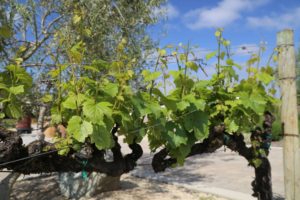
 The 2019 Ceja Vineyards Napa Valley Cabernet Sauvignon (100% varietal) is from La Loma Vineyard along the Silverado Trail, a site located slightly south of the Stags Leap District. This wine is deep ruby; the distinctive bouquet would immediately stand out against any of the contemporary more hedonistic and fruit forward Napa Valley wines of this variety. The bouquet offers scents of tobacco spice, leather, sweatiness, a minerality and a light red chili spice. Its focus is on savory rather than fruit. The palate is clearly red fruited with an accompanying bright acidity; its flavors include cherry, currant and cranberry. Fresh. For reference we tasted this wine 5 years post vintage. Lingers juicy, mouth watering and brightly lit like a halogen lamp. Amelia always equates silkiness with sexiness – referring to texture of the tannins. The gravelly tannins offer a lightly lingering dusty character and are seamlessly integrated into the finish. This wine was aged for 24 months in French oak barrels.
The 2019 Ceja Vineyards Napa Valley Cabernet Sauvignon (100% varietal) is from La Loma Vineyard along the Silverado Trail, a site located slightly south of the Stags Leap District. This wine is deep ruby; the distinctive bouquet would immediately stand out against any of the contemporary more hedonistic and fruit forward Napa Valley wines of this variety. The bouquet offers scents of tobacco spice, leather, sweatiness, a minerality and a light red chili spice. Its focus is on savory rather than fruit. The palate is clearly red fruited with an accompanying bright acidity; its flavors include cherry, currant and cranberry. Fresh. For reference we tasted this wine 5 years post vintage. Lingers juicy, mouth watering and brightly lit like a halogen lamp. Amelia always equates silkiness with sexiness – referring to texture of the tannins. The gravelly tannins offer a lightly lingering dusty character and are seamlessly integrated into the finish. This wine was aged for 24 months in French oak barrels.
The 2018 Ceja Vineyards Oxomo Red Wine is a blend of 90% Cabernet Sauvignon, 10% Merlot. This wine is medium ruby color in the glass; the bouquet offers aromas of cherry cola, raspberry and some underlying spices including clove, cardamom and Graham cracker. Medium bodied, this wine offers darker fruit and spice flavors including cherry, blackberry and other berry fruits. Features a juicy mouthwatering and savory finish filled with darker spices including peppercorn. The well-integrated tannins are earthy and slightly gravelly. This wine drinks very well in its youth.
The Ceja’s enjoyed some of the Merlots they tasted during a trip to St. Emillon in Bordeaux, France. Amelia recalls the vibrancy and freshness these wines displayed. They returned from Bordeaux inspired to plant Merlot. So they did, 10 acres on the Sonoma side of Carneros at a time when all their neighbors were growing Chardonnay and Pinot Noir. And now according to Amelia, Merlot is the third most planted variety in Carneros.
Dessert
Inspired by tasting an 1862 bottling of Château d’Yquem that a generous Ceja club member opened for Amelia and Pedro, the couple decided to produce their own version. Their first vintage of this Sauterne style late harvest wine was in 2006. This wine is only produced when conditions are favorable for the formation of botrytis cinerea, a grey fungus that forms on the outside of the grapes, desiccating them, resulting in higher sugars and concentration of flavor. As of our latest update to this review they have also produced this wine in 2010 and in 2022.
The 2010 Ceja Vineyards Dulce Beso (sweet kiss) Late Harvest is a unique blend of 94% Chardonnay and 6% Sauvignon Blanc. For reference we tasted this wine 14 years post vintage. It is deep amber in color; the bouquet offers sweet aromas of toffee, caramelized sugars including an aroma that reminds us of smelling the top of a of creme Brule in a ramekin, dried apricots, dried nectarines and warm honey. This wine is noticeably sweet but in no way linear because of its generous acidity. The palate somewhat mirrors the bouquet; it is rich and reveals flavors of apricot, dried peaches and nectarines, toffee, creme Brule and toasted almond. The finish is lively, mouth watering, sweet and long lasting. This wine has decades of life ahead of it still. Its natural sugar at harvest was 40.8% by weight with its residual sugar 14.6% by weight.
Tasting Room

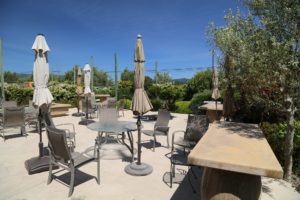 Their original tasting room was located in downtown Napa on 1st Street, on site of what is now the Archer Hotel; they closed the tasting room in September 2014. Around this time, Ariel Ceja (Amelia and Pedro’s son) also founded and operated Bistro Sabor, a restaurant that featured Mexican street food as well as Ceja wines. This restaurant closed in 2013. Ariel later founded Dance Papi, a still operating online dance resource for Salsa, Cuban salsa, conga drums and hand percussion.
Their original tasting room was located in downtown Napa on 1st Street, on site of what is now the Archer Hotel; they closed the tasting room in September 2014. Around this time, Ariel Ceja (Amelia and Pedro’s son) also founded and operated Bistro Sabor, a restaurant that featured Mexican street food as well as Ceja wines. This restaurant closed in 2013. Ariel later founded Dance Papi, a still operating online dance resource for Salsa, Cuban salsa, conga drums and hand percussion.
Currently the Ceja family operates a tasting room in neighboring Sonoma County (within walking distance of the ever popular Lou’s Luncheonette roadside restaurant) along the other side of the heavily trafficked Highway 12. Pull in at 22989 Burndale Road. This is a collective of sorts; at last count 6 producers occupy this complex all in separate spaces within the main building (which also contains a working winery). Ceja however, is located inside of a standalone ‘house’ which serves as the tasting room, but they also offer plenty of outside seating. While located next to Highway 12, from Spring through the end of Summer there is plenty of vegetation to conceal the seating area from the busy roadway. And there are several outdoor garden type areas for guests to enjoy and relax in. Reservations are requested but walk-ins are accommodated if seating is available.
Ceja Family Vineyards has already accumulated numerous accolades including being voted “Best New Winery” by ninety of the world’s top wine writers, a front-page mention in the New York Times, a spotlight on CNN and appearances on several food related TV Shows. One of the perks of being a member in their wine club are invites to all their parties – which have a reputation locally as being extremely fun events.
Tasting Room, Sonoma
Winery Sonoma
While no longer producing episodes, the Ceja’s bi-cultural online cooking show, Salud Napa Valley is a rich culinary resource. And for several years the Ceja’s have offered various wine themed cruises at select times of the year ranging from the Caribbean to Alaska to Europe. For more information and or to join one of three membership levels in the Casa Ceja wine club, visit: www.saludnapa.com and for more information about their wines and or to purchase wine, visit: www.cejavineyards.com

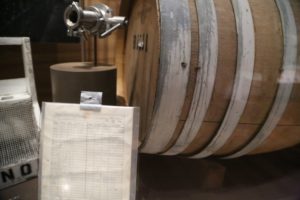 FOOD: Transforming the American Table 1950–2000 – Smithsonian, National Museum of American History
FOOD: Transforming the American Table 1950–2000 – Smithsonian, National Museum of American History
FOOD: Transforming the American Table 1950–2000 is an ongoing exhibit at the Smithsonian Museum, housed on the lower floor of the Behring Center, the National Museum of American History. Visitors to the Smithsonian National Museum of History can park on nearby streets (very limited parking) or at the parking lot next to the Ronald Reagan Building (only about a 10–12-minute walk away). Alternatively, the Federal Triangle Metro stop is only about a 1–2-minute walk away.
Warren and Barbara Winiarski (Stag’s Leap Wine Cellars) were instrumental in helping develop this exhibit which has been on display since late 2012. A number of Napa Valley mementos are on display from vintners Mike Grgich and Gustavo Brambilia and from wineries including Biale Vineyard and Ceja Family Vineyard.
Several historical mementos, tools and other artifacts from the early days of Stag’s Leap Wine Cellars are displayed in a sub exhibit titled: Wine for the Table. These items include a Stag’s Leap Winery notebook from 1974 containing pages and pages of handwritten notes including winemaking details and names of vineyards worked with at that time (some of these notes were written by his only employee at the time, John Williams – later co-founder of Frog’s Leap Winery), a wine barrel and related equipment and a number of historical photographs from Warren and Barbara’s personal collection.
In addition to the physical items, a monitor plays 15 short interviews with Warren and some of his employees – made in 1997 when a team from the Smithsonian visited Stag’s Leap Wine Cellars and recorded an oral history project.
The exhibit is categorized into nearly 30 smaller sections – focusing from the recovery of Prohibition to more modern-day winemaking – along this historical timeline, highlighting individual personalities and wineries, tools, vineyard practices and other related information.






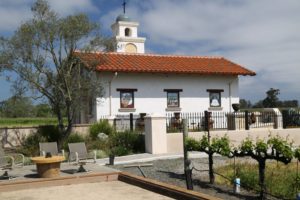
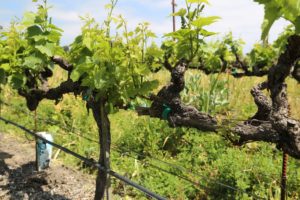
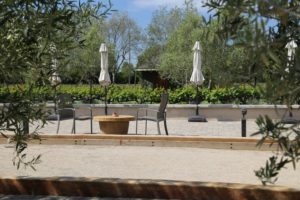
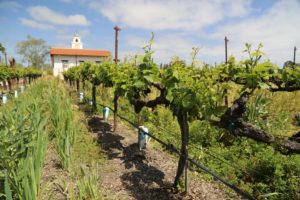
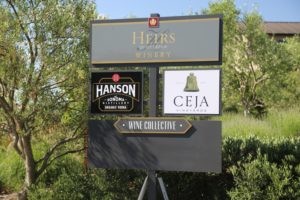
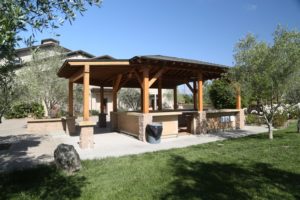

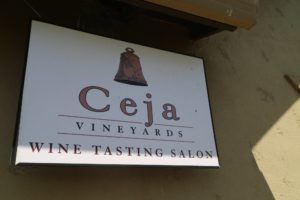
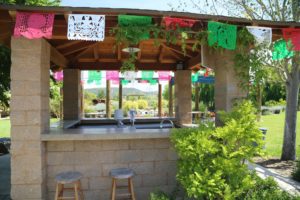
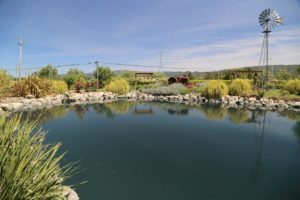
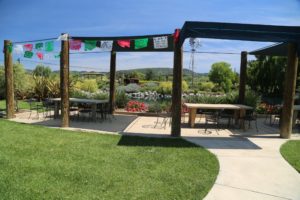
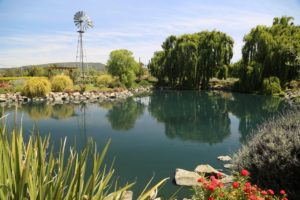
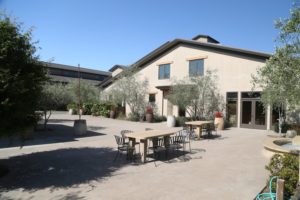

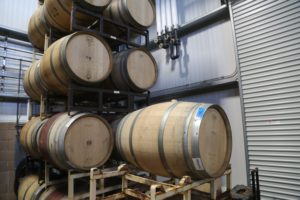
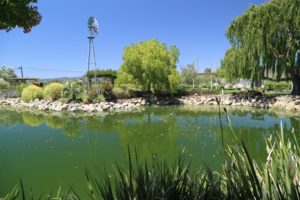
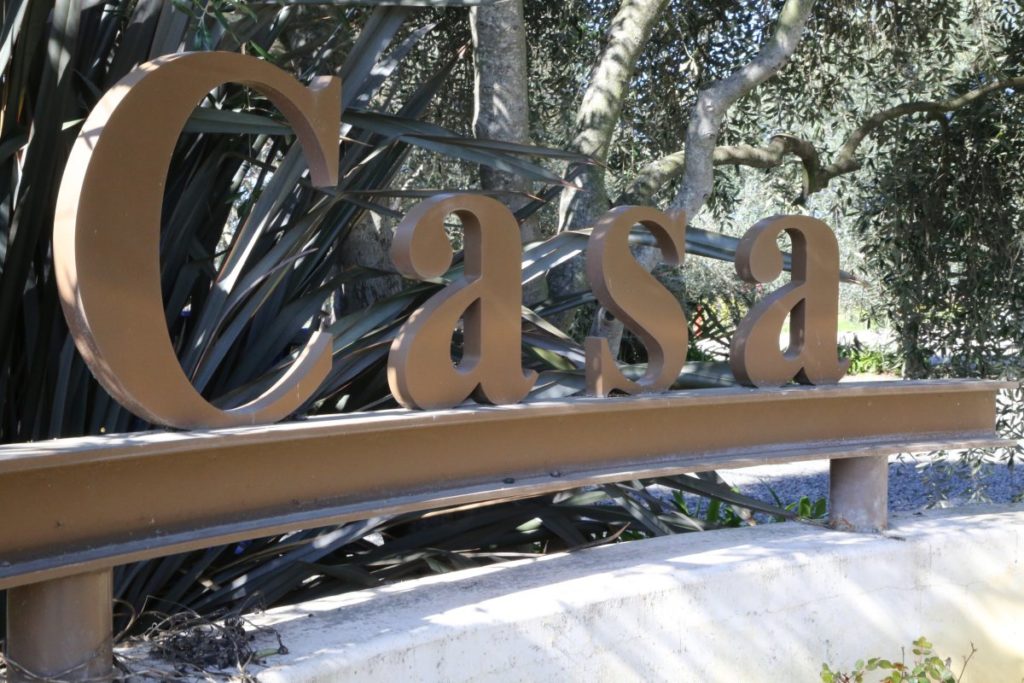
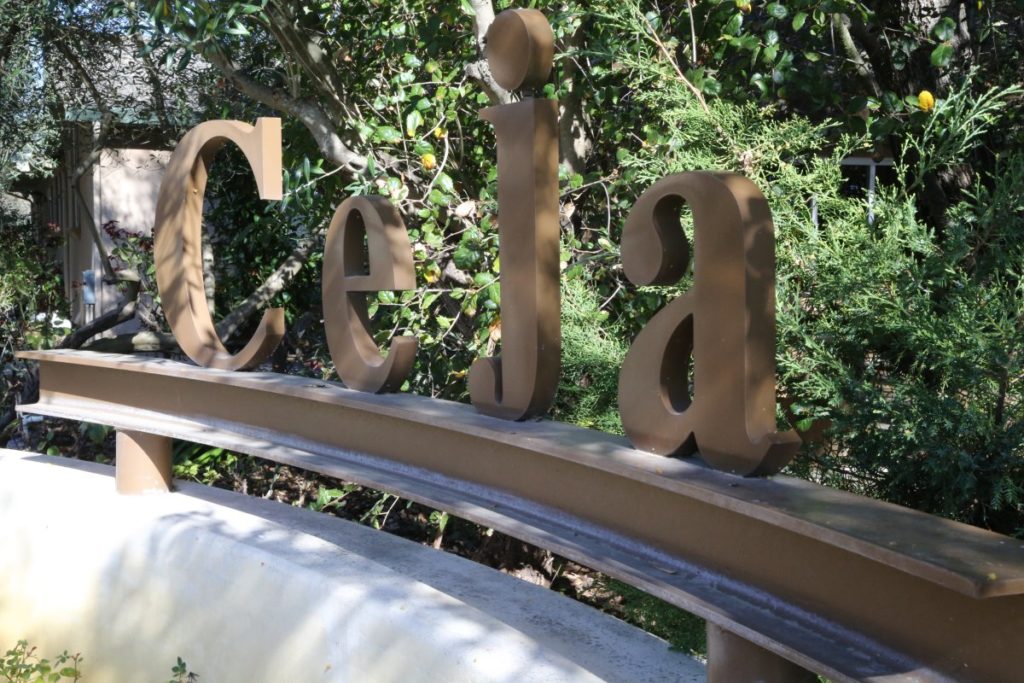




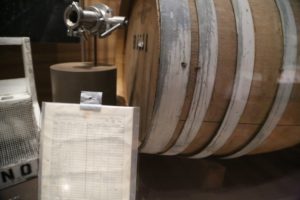
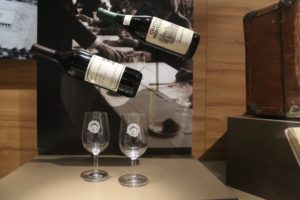
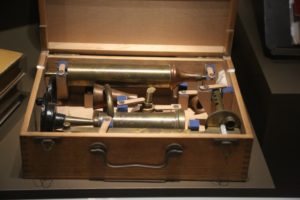
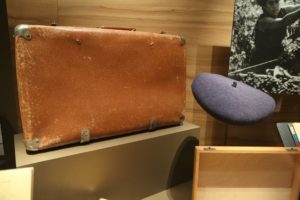


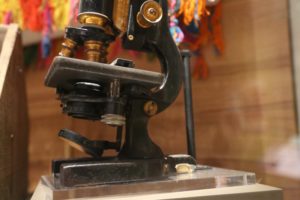
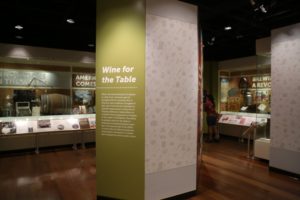
I miss and love you my friends!!
I see that you are still selling Vino De Casa 2012.
I recall the wonderful taste
Of your 2012 redwine.
I want go purchase a. Case of this wonderful blend.
Let me know!
Gracias Gilbert – I’ve passed your request on to Ariel.
~ Dave
I miss not seeing mi gente Latina del Vino!! In Napa !! Be well and sip more TINTO!!!
Charlie – hope you can make it out to Napa later this year 🙂